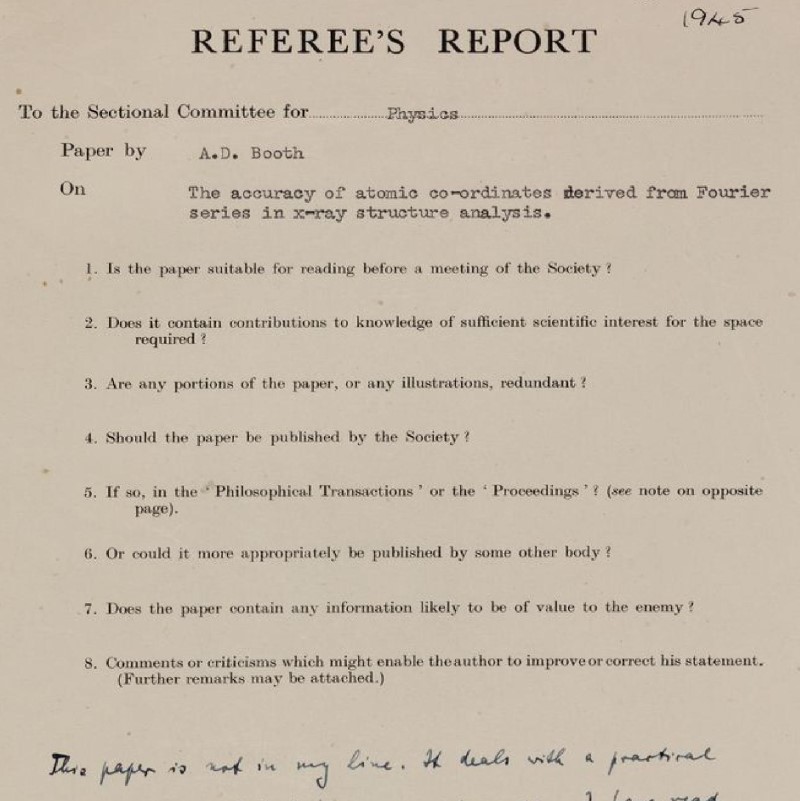We thought it would be interesting to examine what we have learnt since switching to open peer review on some of the Royal Society journals

We thought it would be interesting to examine what we have learnt since switching to open peer review on some of the Royal Society journals.
Open peer review in Royal Society journals
A number of our journals operate transparent peer review, where we publish peer review reports alongside articles, giving the reviewers the option to reveal their identity. Indeed, Royal Society Open Science launched with this model and so it's baked into that journal’s identity. From there several of our journals adopted similar approaches. By working with Web of Science Reviewer Recognition, we are now able recognise peer review reports as scientific outputs by assigning digital object identifiers (DOIs) – making it easier for reviewers include their peer review work in their ORCID records.
Our reviewers may opt for anonymity
Though we publish reviews, we leave it up to the reviewer to decide if they want their identity revealed, and we understand there are good reasons (other than concerns about biases) that a reviewer may opt for anonymity. As a publisher, we have also, on occasion amended author identities, where authors have expressed concerns that their published identity differs from their ‘real’ identity and that a separation between the two is sometimes important for the safety of authors.
How has the greater openness affected the journals?
What has been the impact of our adoption of increasing levels of openness been on the identity of our authors, editors and reviewers, and – for that matter – the reviews themselves?
More engagement from groups whose identities have been historically less visible
It is broadly true to say that the geographical and gender make-up of our stakeholders has evolved: we see more non-Western authors, editors and reviewers, and a more representative (though by no means balanced) distribution of genders. This is partly a result of our active efforts to encourage the engagement of a more inclusive and diverse demography in our journals but it is also surely partly a reflection of the greater visibility that under-represented groups gain by opening up the peer review process: as the identities of our stakeholders becomes clearer to our readers (many of whom go on to write, review or edit for our journals), we hope it encourages still more engagement from groups whose identities have been historically less visible and whose voices have not been heard.
Better reviewing practices
By opening up peer review, we also encourage better reviewing practices: reading what makes a good or less-than-good review helps particularly early-career scientists to write better reviews themselves, and so promotes their identity as constructive and collaborative scientists.
More confidence in raising queries
An interesting – if perhaps unsurprising – consequence of the greater openness that open peer review and the related open data policies we have implemented is that our readers have felt more confident in raising queries as/when they arise from their reading of published reviews or datasets. This reinforces the identities of the journals as being bastions of scientific rigour: not only trying to ensure high-quality review to start with but recognising where we err and doing our best to correct the scientific record.
It is not a revelation to say that identity in peer review is a subject that is much larger than a single blog can hope to address, but we hope our readers will agree that the foundations we have laid are a good start, and we hope you’ll continue to support us (and be supported by us) as we continue on the journey.
Find out how to volunteer to review for the Royal Society’s journals, and the benefits that we offer our reviewers.




